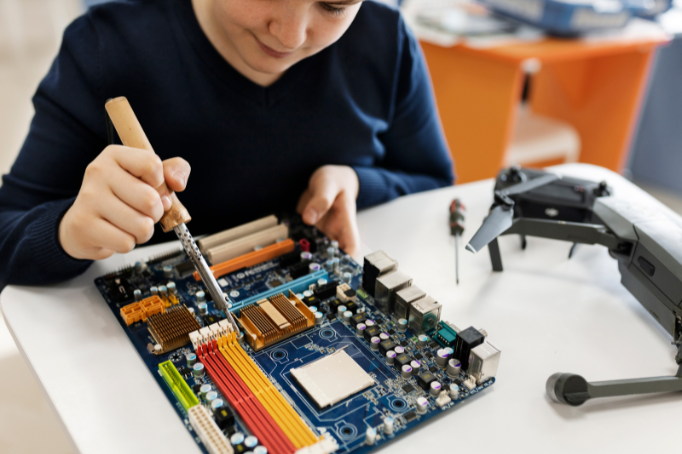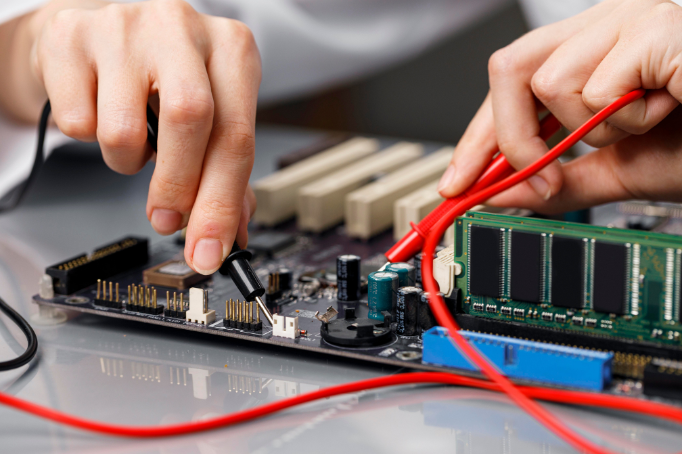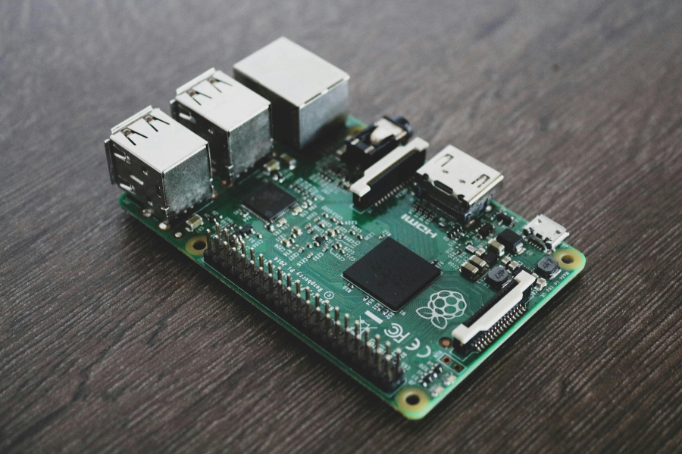Voltage regulators became essential in the demand for achieving sustainable technology to control the power while preserving device life and supporting the shift to cleaner energy solutions. On this cultural note, voltage regulators are looked at as indispensable to sustainable electronics because of their roles of stabilizing power supplies, cutting energy usage, and enhancing the reliability of electronic components. This blog specifically examines the responsibility of voltage regulators to promote sustainable design and its significance to sustainable design and development in the electronic industry and its effects towards the environment.
Improving Energy Efficiency and Reducing Power Waste
A basic purpose of any voltage regulator is to provide a fairly steady output voltage regardless of variations in the input power or the load. In the electronics field, consistency in the power supply is crucial to ensure that the devices and equipment work effectively without shortcuts. Voltage regulators achieve this by putting the power received from the power source at a certain level; this discourages power wastage or consumption. This regulation causes power wastage to be minimized and possible so that all the devices take only the amount of power they require.

Linear and Switching Regulators in Energy Efficiency
Two main types of voltage regulators serve distinct functions: linear regulators and switching regulators.
- Linear Regulators: Fixed or linear regulators are less complex and comprise common usage in circuits where less power level modulation is needed. They have one minor inconvenience in that they are not very efficient; more often than not, they carry out excess energy by emitting heat to the environment, thus wasting power. Nevertheless, they are used at low power where stability is more important than on-chip efficiency.
- Switching Regulators: These regulators are slightly more efficient than linear regulators, and they are much more suitable for dealing with high power loads. Switching regulators can take waste voltage and turn it into usable power without converting as much of that power into heat, and therefore they are a good type of power supply for green electronics. This is because they are suitable for use in applications that require high energy efficiency, such as laptops, smartphones, and IoT devices.
Due to their effectiveness in minimizing power wastage, voltage regulators cut the number of watts that a given electronic gadget tends to pull on any power source. However, when scaled across millions of devices, the savings in energy are disproportionate and represent a valuable contribution to environmental sustainability. Less amount of energy consumed decreases the strain on the power stations and hence helps the world reduce greenhouse gas emissions as part of the global objective.
Extending Device Lifespans and Reducing E-Waste
Voltage regulators also maintain the durability of the devices and hence can be regarded as having great significance to the longevity of the devices. Periodic or even high voltages adversely affect sensitive points and thus reduce their useful life. Since voltage regulators can deliver a constant and stable supply of voltage to the working of electronic components, this prevents such damage and increases the lifespan of the device.
Longer-lasting devices are preferred since they require frequent replacements, especially in this age when e-waste is rapidly increasing all over the world. Generated electronics waste is a significant problem since this type of waste usually comprises hazardous materials and is non-biodegradable. Semiconductors that help devices last longer also decrease how often users have to get a new device, which lowers e-waste production straight up.
For instance, in applications such as portable devices like smartphones where there is persistence of product upgrading, it is possible to incorporate a strong system that regulates power to guarantee long-period battery life and steady performance. Through maintaining voltage stability as well as protecting devices from harm, turnover rates of voltage regulators slow down and aim to similarly slow down the rate at which electronics are disposed of, thus being sustainable.
Minimizing Heat Generation and Cooling Needs
Switching voltage regulators also helps in creating sustainable electronics since they are less resilient to heat. In electronics, heat is one of the occurrences majorly resulting from poor power management. In the case of applications where voltage regulators are used in a circuit, this wastes power in the form of heat and puts extra loads on the devices. This leads to thermal deterioration of the components using the devices and hence shortening their life span; they also increase the use of the cooling systems, which are major power consumers.
General-purpose voltage regulators such as switching regulators and low dropout (LDO) voltage regulators have improved efficiency in a way that minimizes heat generation. They have very low parasitic losses and perform the majority of the input power to useful output energy. This efficiency negates the use of fans or other cooling appliances, which on their own are power-hungry and drain power from the device.
In facilities, such as data centers, where thousands of servers operate non-stop and generate significant heat, effective voltage regulation can be of immense help. They also lower heat in the form of regulating the voltage and therefore lessen the energy demand required for cooling the facility. For data centers that implement green energy practices, it is advantageous to control power well, as this lessens the combined power that efficiently feeds the servers about the company’s sustainable energy mission and also gains cost benefits.

Supporting Renewable Energy Sources and Off-Grid Systems
Voltage regulators are also very important in reinforcement in the utilization of renewable energy sources including solar and wind energy systems. The source of renewable power may be variable as compared to the conventional forms of power supply; for example, the voltage obtainable from solar panels depends on the intensity of sunlight. These variations are controlled by voltage regulators, which convert fluctuating input voltages derived from renewable energy sources into a steady voltage source for use by the devices. The former capability is particularly valuable in off-grid applications in which devices depend solely on renewable power sources.
For instance, connecting solar-powered devices in inaccessible places to the Internet of Things depends on voltage regulation to function properly. Voltage regulators, especially the buck-boost converters, can adjust to the input level and ensure that these devices power on even with inconsistent light sources such as sunlight. The utilization of renewable energy is facilitated by voltage regulators and therefore contributes to lowering the nation’s reliance on fossil fuel, an effort that has since received international approvals and support towards supplying cleaner sources of electricity.
Moreover, voltage regulators are also involved when someone wants to advance energy-harvesting technology. Energy scavengers are defined as devices that can obtain small quantities of energy from their surrounding environment; they encompass light, vibrations, heat, etc. Low-power sources can be interfaced with voltage regulators in such a way that the regulator controls the output to allow devices to receive constant power. This makes them suitable where the powered device will need to run autonomously on renewable energy, such as in environmental monitoring or smart cities.
Enabling Efficient IoT Devices
The Internet of Things still includes millions of active elements, ranging from household appliances to industrial sensors, that need sound power supply management. A large number of IoT devices are battery-powered, and they have to provide useful service for quite a long time without the need for recharging or replacement of batteries. Since IoT involves a vast number of devices that depend on batteries, voltage regulators also have the mission of making batteries last as long as possible.
By monitoring electrical voltage closely, smart IoT devices utilize little energy, hence saving the battery and the need to replace batteries now and then. This is especially appreciated in cases where IoT devices are deployed in remote areas or in many instances where replacing batteries would not be feasible and timely.
Efficient voltage regulators also enable IoT devices to run optimally even under unsteady voltages of power. For instance, smart agriculture sensors require status measurement, and this will entail a constant supply of energy in areas that might be far off with few points of power supply. Voltage regulators make certain that these sensors get a constant supply of electricity, and therefore there can be long-term sustainable IoT networks addressing areas like environmental monitoring, vertical farming, and precision farming that require IoT sensors.
This makes it possible to have low power operation, thus making voltage regulators part of the stream towards sustainability options for IoT in terms of power usage, reduction of battery manufacturing and disposal, as well as supporting large-scale IoT developments in the long run.

Advancing Miniaturization and Resource Efficiency
Consumers prefer compact electronic devices due to the availability of smaller voltage regulators, thus contributing to the concept of sustainable design. Miniaturized voltage regulators also enable manufacturers to design smaller equipment and lighter with reduced complexity, hence using minimal materials and resources. This trend is favourable for both mobile and communication end-applications, including smartphones and wearable electronics, as well as complex end-applications across various industries, including EVs and smart medical devices.
Manufacturing lighter and thinner devices requires a lesser amount of raw materials and therefore decreases the environmental effect produced. Lightweight devices also consume less fuel that is needed to transport them, making their use sustainable from the time of their manufacture to the time of their disposal. Further, new and compact voltage regulators make it easier to manage mini and efficient batteries, making it less necessary to use lithium and other scarce resources to make batteries.
As the manufacturers try to develop new circuitries that employ smaller sizes and even less power, voltage regulators will offer further enablement of the utilization of resources sparingly and proper sustainability throughout the production, utilization, as well as disposal of electronic devices.
Paving the Way for Ultra-Low-Power Applications and Autonomous Systems
Another aspect, important in terms of sustainability, is the demand for ultra-low-power electronics, where voltage regulators provide a substantial contribution. It may be useful in applications like smart wearables, medical devices, environmental sensors, and any application where the load current is very low and power supply can be protracted other than normal batteries. This is done by energy-harvesting elements: voltage control to cooperate with small power inputs like light in the surroundings or heat energy to ensure that devices are on.
For example, wearable health monitors can incorporate an energy-harvesting voltage regulator to extract power from body heat or motion and hence eliminate the need for a battery. As these sorts of systems operate with sub-microamp quiescent currents and are capable of providing decades of power from an energy source the size of a small coin cell, they are highly significant in terms of sustainability and are valuable in supporting broadcasting and other autonomous applications that do not require frequent recharging.
With such progress, voltage regulators are taking the lead in contributing to the construction of such self-sustaining systems, thus minimizing the impact on the environment by electronics; they are also opening doors to new, environmentally friendly applications.
Conclusion
Voltage regulators form an important part of modern electronics since they enable efficiency, durability, and innovative applications with renewable energy sources. Since increasing the productivity of ordinary appliances and enabling the future generation of ultra-low-power autonomous systems, voltage regulators indeed facilitate the path towards sustainable technologies. Therefore, the role of voltage regulators will remain paramount in the advancement of green, efficient, and resource-sensitive design demand with an increase in sustainability design.
About The Author
Elena Tang
Hi, I’m Elena Tang, founder of ESPCBA. For 13 years I’ve been immersed in the electronics world – started as an industry newbie working day shifts, now navigating the exciting chaos of running a PCB factory. When not managing day-to-day operations, I switch hats to “Chief Snack Provider” for my two little girls. Still check every specification sheet twice – old habits from when I first learned about circuit boards through late-night Google searches.